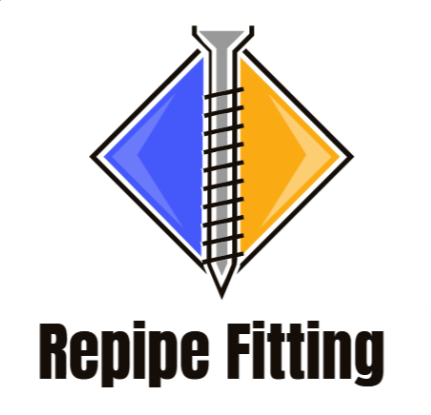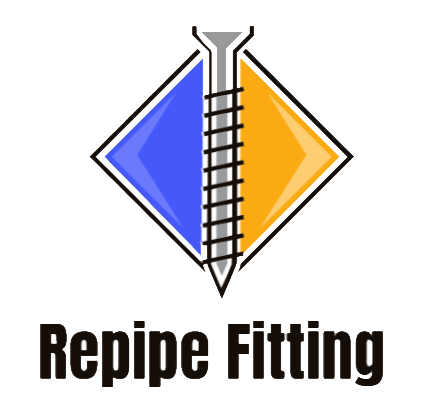Introduction:

Hey there! If you’ve ever experienced the frustration of a slow-draining bathroom sink or the unpleasant aroma of a stinky kitchen sink, you’re not alone. Sink drains are a common household issue, but with the right knowledge and a little elbow grease, you can keep them clean and clear. In this guide, we’ll delve into the world of sink drain maintenance, exploring the importance of keeping those drains clean and the common issues that arise when we neglect them. So, grab your tools and let’s dive in!
Importance of maintaining clean sink drains:
Maintaining clean sink drains isn’t just about aesthetics. It’s about:
Health and Hygiene: Sink drains, especially in the bathroom and kitchen, can become breeding grounds for bacteria. Germs and bacteria thrive in the damp, dark environment of a clogged sink. Regular cleaning ensures that these harmful microorganisms are kept at bay.
Efficiency: A clean drain ensures water flows smoothly. Slow drains can be a sign of blockages that, if not addressed, can lead to bigger plumbing problems.
Odor Prevention: Lingering odors are often a sign of food waste, grease and fat, or other debris rotting in your drain. Regular cleaning can prevent these unpleasant smells.
Common issues faced due to clogged or dirty drains:
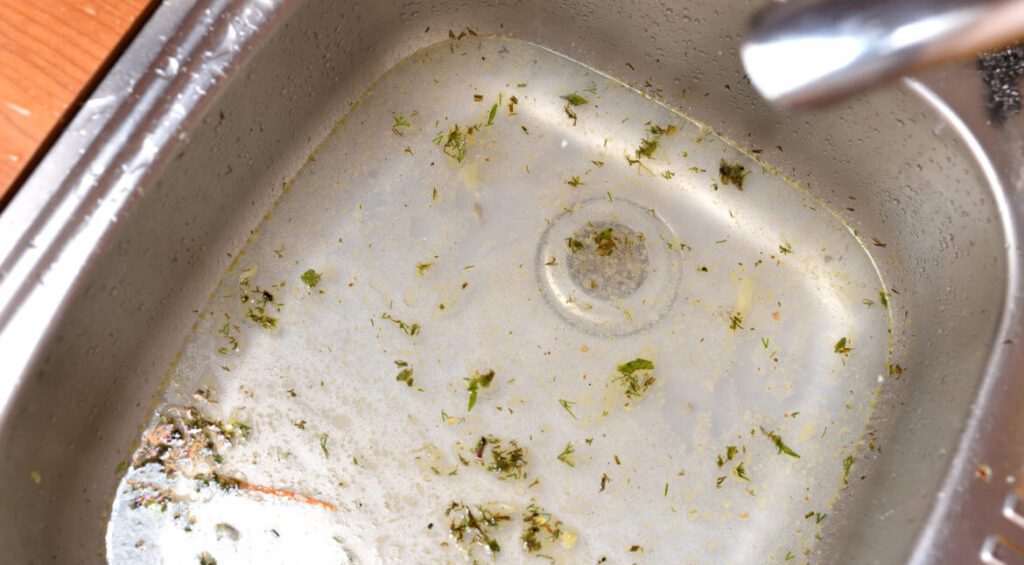
- Slow-draining sink: Often caused by hair blockage, soap scum, or grease clogs.
- Stinky drains: Lingering bathroom odor or a sewer smell can indicate a buildup of bacteria or food waste.
- Faucet backup: Water backing up in your sink can be a sign of a severe blockage further down the line.
- Sink gurgling: This can be a sign of air trapped in your pipes due to a blockage.
2. Common Causes of Clogged and Smelly Drains:
Hair, soap scum, and food waste accumulation:
One of the primary culprits behind blocked sink drains in both the bathroom sink and kitchen sink is the accumulation of hair, soap scum, and food waste. Over time, these materials bind together, creating stubborn blockages. The bathroom sink often faces hair blockage and soap scum, while the kitchen sink struggles with food waste and grease.
- Hair: Hair easily slips down the drain but can quickly bind with soap scum, creating a tangled mess that traps other debris.
- Soap Scum: Over time, soap residue builds up on the walls of the drain pipes, catching hair and other particles.
- Food Waste: In the kitchen, food particles, especially starchy or sticky foods, can adhere to the walls of the sink drains, leading to clogs.
Grease and oil build-up:
The kitchen sink is particularly susceptible to grease and fat build-up. When hot grease or oil is poured down the sink, it may seem harmless. However, as it cools, it solidifies, sticking to the walls of the drain pipes and trapping other debris. Over time, this can lead to a slow-draining sink or even a complete blockage. It’s always best to dispose of grease and oil in the trash rather than down the sink.
The impact of foreign objects:
Sometimes, the cause of a clogged drain is something unexpected. Children’s toys, jewelry, or even a buildup of calcium from hard water can lead to blocked sink drains. Foreign objects can become lodged in the U-bend, causing immediate blockages. It’s essential to be mindful of what goes down the drain and to use sink strainers to catch larger objects.
DIY Solutions to Tackle These Common Causes:
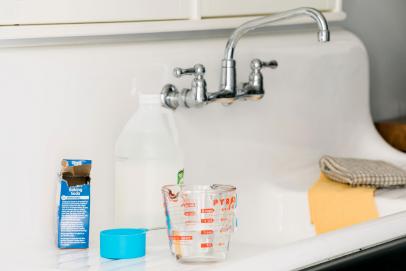
Before you consider a professional service, there are several DIY solutions to try:
- Baking Soda and Vinegar: This dynamic duo creates a fizzing reaction that can break down hair and soap scum. Pour baking soda followed by vinegar and listen for that fizzing sound. Finish with a hot water flush.
- Boiling Water: A simple yet effective solution, especially for grease clogs. Pouring boiling water can melt away the grease and fat, restoring the flow.
- Plunger: A household plunger can be your best friend when tackling blockages. Ensure a good vacuum seal and use the Effective Plunger Technique for best results.
- Natural Solutions: For those looking for environmentally friendly options, a mixture of baking soda and salt can act as a natural scouring agent. Follow with boiling water for a natural cleaning method that’s gentle on your pipes.
Prevention is Better Than Cure:
To avoid the hassle of a clogged drain:
- Regular Cleaning: Use a mixture of baking soda and vinegar regularly to prevent buildup.
- Avoid Pouring Grease: Always dispose of grease and oil in the trash.
- Use Sink Strainers: These can catch larger objects and prevent them from going down the drain.
3. DIY Natural Cleaning Solutions:
Baking Soda and Vinegar:

Ah, the classic duo! Baking soda and vinegar have been household cleaning staples for generations, and for a good reason. When combined, they produce a fizzing reaction that can effectively break down blockages in sink drains.
The chemical reaction and its effectiveness:
When baking soda (a base) and vinegar (an acid) are mixed, they create a chemical reaction producing carbon dioxide, which you’ll recognize by the fizzing sound. This effervescence can help dislodge hair blockages, soap scum, and other debris from bathroom and kitchen sinks. The reaction also has natural cleaning properties that can combat bacteria and lingering odors.
Step-by-step guide to using this method:
- Pour a cup of baking soda down the clogged drain.
- Follow with an equal amount of vinegar.
- Allow the mixture to sit and work its magic for about 30 minutes. You’ll hear the fizzing reaction as it works to break down the blockage.
- Finish with a boiling water rinse to wash away the loosened debris.
- Repeat if necessary.
Salt and Hot Water:
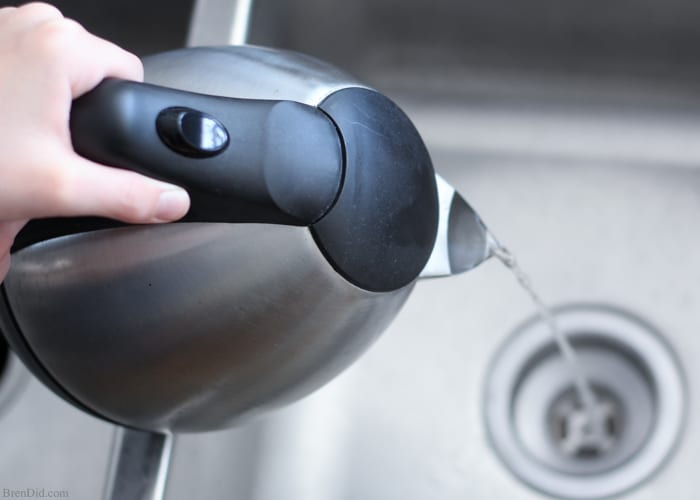
Salt, a natural scouring agent, combined with hot water, can be a potent solution against certain types of blockages, especially grease clogs.
How it tackles grease and soap scum:
Salt acts as an abrasive, helping to scrub away at the grease and soap scum lining the walls of your sink drains. When followed by hot water, any loosened grease or oil is melted and flushed away, leaving your drains clean and clear.
Application process:
- Pour half a cup of salt down the blocked sink drain.
- Boil a kettle of water and pour it directly into the drain.
- Allow the hot water to sit for a few minutes, giving the salt time to scrub away the blockage.
- Repeat if necessary.
Boiling Water:
Sometimes, simplicity is key. Boiling water can be surprisingly effective against certain blockages, especially those caused by grease and fat.
Simplicity and effectiveness against certain blockages:
Hot water acts as a natural solvent, melting away grease and fat that may have solidified in your sink drains. It’s a quick, environmentally friendly solution that’s especially effective for kitchen sinks where grease clogs are common.
Application:
- Boil a kettle of water.
- Pour the boiling water directly down the drain.
- Wait a few minutes and test the drain. If it’s still slow-draining, you might want to consider other methods or a combination of solutions.
4. Tools and Products for Drain Cleaning:
Every plumber, whether a seasoned professional or a DIY enthusiast, knows the importance of having the right tools for the job. When it comes to sink drain cleaning, there are a few essential tools that can make the process smoother and more effective. Let’s delve into these tools and learn how to use them properly.
Plungers:

The humble plunger is often the first tool people reach for when faced with a clogged drain. It’s simple, effective, and can tackle a variety of blockages.
How to use a plunger effectively:
- Ensure the sink has enough water to cover the plunger’s rubber cup.
- Place the plunger over the drain, ensuring it has a good seal.
- Push down and pull up vigorously several times to create suction.
- Remove the plunger and check the drainage. Repeat if necessary.
Importance of creating a vacuum seal:
The effectiveness of a plunger lies in its ability to create a vacuum seal. This suction force can dislodge blockages, making it an essential tool for drain cleaning.
Wire Hangers:
A simple wire hanger can be a surprisingly effective tool for unclogging drains, especially when dealing with hair blockages in bathroom sinks.
DIY method to unclog drains:
- Unwind a wire hanger and straighten it as much as possible.
- Create a small hook at one end.
- Insert the hooked end into the drain and gently fish around to catch and pull out blockages.
- Rinse the drain with hot water to clear any remaining debris.
Precautions to avoid pushing blockages further:
While wire hangers can be effective, it’s essential to be gentle and avoid pushing the blockage further down the drain. Always pull debris out rather than pushing it in.
Drain Snakes:

Also known as a plumber’s snake or cable auger, the drain snake is a more advanced tool designed to tackle stubborn blockages deep within the drain.
Design and functionality:
A drain snake consists of a long, flexible coil that can be manually or mechanically rotated. As it’s pushed down the drain, it can dislodge blockages that are out of reach for other tools.
How to use a drain snake for best results:
- Insert the end of the snake into the drain.
- Turn the handle to rotate the coil, pushing it further down the drain.
- When you feel resistance, you’ve likely reached the blockage. Rotate the snake to break it up.
- Pull the snake out, bringing the debris with it.
- Rinse the drain with hot water to ensure it’s clear.
5. Chemical Cleaners vs. Natural Solutions:
Navigating the world of drain cleaning can sometimes feel like a balancing act. On one side, you have powerful chemical cleaners that promise quick results, and on the other, natural solutions that are gentle on the environment. Let’s break down the pros and cons of each.
Pros and cons of over-the-counter drain unblockers:
Over-the-counter drain unblockers, often referred to as liquid cleaners, can be incredibly effective at dissolving stubborn blockages in sink drains.
- Pros:
- Quick and effective unclogging.
- Easily available in most stores.
- Designed specifically for tough blockages like hair and grease.
- Cons:
- Can be harmful to the environment.
- Prolonged use can damage drain pipes.
- May pose safety risks if accidentally ingested or come into contact with skin.
Environmental impact of chemical cleaners:
While chemical cleaners can be effective, they often contain substances that are harmful to the environment. When washed down the drain, they can contaminate water sources and harm aquatic life. Opting for environmentally friendly cleaners or natural solutions can be a more sustainable choice.
Safety precautions when using chemical products:
- Always read and follow label instructions.
- Wear gloves and eye protection.
- Ensure good ventilation in the area.
- Keep out of reach of children and pets.
- Never mix different chemical products, as this can produce toxic fumes.
6. Special Focus on Kitchen Drains:
The kitchen is the heart of the home, but it’s also a hotspot for clogged drains. With food waste, grease, and other debris going down the sink, it’s essential to know how to maintain and clean kitchen drains effectively.
Challenges with food waste and grease:
Food waste, especially grease and fat, can solidify in sink drains, leading to stubborn blockages. Over time, this can result in slow-draining sinks and lingering odors. Regular cleaning and mindful disposal of waste can prevent these issues.
Importance of cleaning garbage disposals:
Garbage disposals are a fantastic kitchen tool, but they need regular maintenance. Ensure you run cold water through the disposal after use, avoid disposing of hard or fibrous foods, and clean it regularly with a mixture of ice cubes and salt to keep it in top shape.
Tips to prevent kitchen drain clogs:
- Use a sink strainer to catch food particles.
- Never pour grease or oil down the drain. Instead, collect it in a container and dispose of it in the trash.
- Run hot water through the sink after washing dishes to flush away any remaining debris.
- Consider natural cleaning methods, like a baking soda and vinegar solution, for regular maintenance.
- Schedule regular Sink Drain Inspections to catch potential issues early.
7. Dealing with Odors and Bacteria:
Ah, the dreaded stinky drain! It’s a common issue, but with a few tricks up your sleeve, you can keep your sink drains smelling fresh and free from harmful bacteria.
Using citrus fruits like lemons, limes, or oranges:
Citrus fruits aren’t just for your summer drinks; they can be a sink’s best friend. The natural acidity in citrus fruits helps break down gunk that causes bad odors, while their pleasant scent leaves your sink smelling fresh.
- Steps:
- Cut a lemon, lime, or orange into small chunks.
- Run your garbage disposal (if you have one).
- Drop the citrus chunks down the drain while the disposal is running.
- Rinse with a little warm water.
Benefits of citrus rinses for garbage disposals:
- Natural deodorizer: Citrus effectively combats lingering odors in sink drains.
- Bacteria killer: The acidity in citrus fruits can kill germs and bacteria.
- Environmentally friendly: A natural solution that’s safe for the environment.
Additional tips to keep drains smelling fresh:
- Regularly pour boiling water down the drain to flush out food waste and bacteria.
- Use a mixture of baking soda and vinegar for a fizzing cleaning action.
- Consider a monthly citrus rinse for regular maintenance.
- Avoid disposing of food items that are known to cause bad odors, like onions and fish, down the garbage disposal.
8. Preventive Measures and Maintenance:
Prevention is better than cure, especially when it comes to sink drains. By adopting a few preventive measures, you can save yourself the hassle of dealing with clogs and bad odors.
Regular cleaning schedules:
Set a reminder to clean your sink drains at least once a month. Regular cleaning can prevent build-up and ensure smooth water flow. Whether you opt for a Natural Cleaning Method or an over-the-counter solution, consistency is key.
Importance of drain catchers:
A simple drain catcher can be a game-changer. It traps food particles, hair, and other debris, preventing them from going down the drain and causing blockages.
Avoiding harmful substances in drains:
- Never pour grease or oil down the drain.
- Avoid flushing hair and soap scum in bathroom sinks.
- Be cautious with chemical cleaners; they can damage pipes and harm the environment.
Conclusion
Cleaning sink drains is an essential part of home maintenance. Whether it’s the kitchen sink dealing with food waste and grease or the bathroom sink battling hair blockages and soap scum, regular cleaning can prevent clogs and ensure a smooth flow. By incorporating both chemical and natural solutions, you can tackle any clog or odor. Remember, prevention is key. Using drain catchers, avoiding harmful substances, and sticking to a regular cleaning schedule can save you from bigger plumbing problems down the road.
FAQ:
Q1: How often should I clean my sink drain?
A: Ideally, you should give your sink drains a basic cleaning once a week. This involves flushing with boiling water or a citrus rinse. A more thorough cleaning using baking soda and vinegar or other drain cleaning products can be done once a month. Regular cleaning prevents the build-up of bacteria, grease, and other debris, ensuring your sink drains remain clog-free.
Q2: Why does my drain smell like sewage?
A: A sewer smell usually indicates a build-up of bacteria or food waste in your drain or garbage disposal. It can also be due to a dry trap, especially in sinks that aren’t used often. Regular cleaning, especially with natural cleaning methods like citrus rinses, can help combat these odors.
Q3: Can I use bleach for smelly drains?
A: While bleach can kill bacteria and remove odors, it’s not recommended for regular use. It can be harmful to the environment and might damage your pipes over time. Instead, opt for environmentally friendly solutions like baking soda and vinegar or citrus rinses.
Q4: What’s the best way to tackle hair clogs?
A: Hair blockages are common in bathroom sinks. Using tools like a wire hanger or a drain snake can be effective in removing hair clogs. Prevention is also key: consider using a drain catcher to prevent hair from going down the drain in the first place.
Q5: When should I call a professional for drain cleaning?
A: If you’ve tried multiple methods and the clog remains, or if you notice recurring clogs, it might be time to call a licensed plumbing professional. They can provide a thorough sink inspection and offer more advanced solutions like Drain Snake Application or even a comprehensive plumbing repair.
